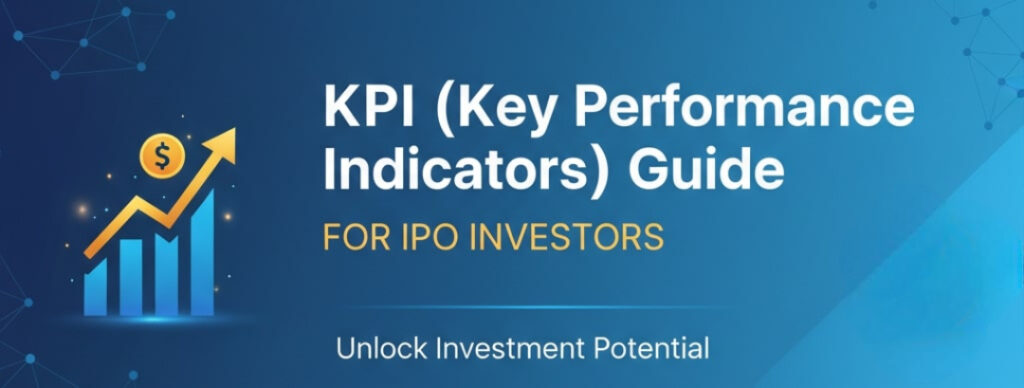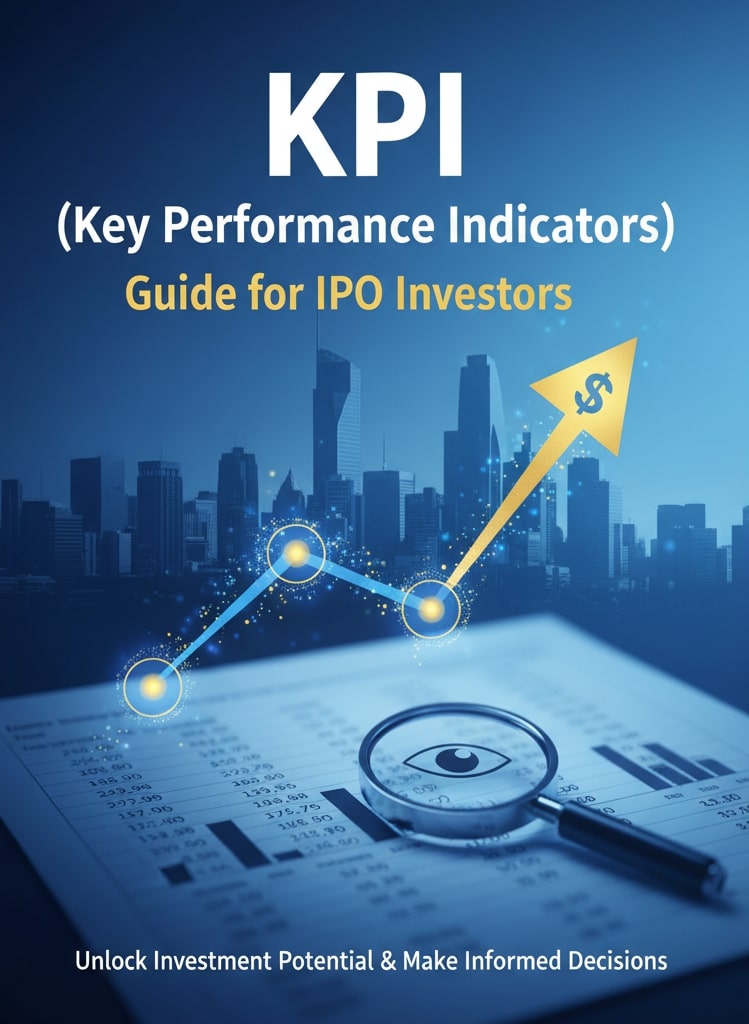Summary
Before investing in an IPO, analysing IPO KPI helps you understand a company’s financial health, efficiency, and long-term potential. These measurable metrics – like revenue, profit, and debt ratios – reveal whether a business is truly investment-worthy.
Introduction
For anyone diving into Initial Public Offerings (IPOs), understanding Key Performance Indicators (KPIs) is non-negotiable. These numbers tell the real story behind a company’s performance – beyond marketing promises or short-term hype.
This guide from IPOCornerr breaks down the essential IPO KPIs every investor should track to make confident, data-driven decisions before applying for an IPO.

What Are IPO KPIs?
IPO KPIs are measurable financial and operational metrics disclosed by a company during its IPO filing – usually found in the Draft Red Herring Prospectus (DRHP). They give investors a clear view of profitability, growth patterns, capital use, and risk exposure.
These indicators make it easier to compare companies within the same sector and spot opportunities that align with your risk appetite and return goals.
Why IPO KPIs Matter
Here’s why tracking IPO KPIs is crucial for every investor:
| Reason | What It Means for Investors |
| Informed Decisions | KPIs provide hard data to evaluate business strength and growth potential. |
| Transparency | KPI disclosure builds trust and credibility in the company’s operations. |
| Peer Comparison | Standardized KPIs allow benchmarking within the same industry. |
| Risk Assessment | Ratios like debt-equity and RoCE reveal financial stability and leverage. |
Key IPO KPIs Every Investor Should Know
- Revenue from Operations
- Tracks income from core business activities.
- Consistent growth shows strong demand and market position.
- Profit After Tax (PAT)
- Indicates total profit after all costs and taxes.
- Steady PAT growth signals a profitable company.
- PAT Margin
- Percentage of revenue that turns into profit.
- A higher PAT margin means better cost management.
- Return on Capital Employed (RoCE)
- Measures how efficiently a company uses its total capital.
- RoCE above 15–20% often reflects solid capital efficiency.
- Return on Equity (RoE)
- Evaluates profitability relative to shareholders’ equity.
- Consistent RoE around 15–20% indicates strong returns for investors.
- Debt-Equity Ratio
- Compares total debt to shareholder equity.
- Lower ratios signal stability; high ratios may mean higher risk.
- Earnings Per Share (EPS)
- Shows profit earned per share.
- Rising EPS suggests increasing shareholder value.
- Price-to-Earnings (P/E) Ratio
- Compares share price to earnings.
- A low P/E can indicate undervaluation; a high one can mean market optimism or overvaluation.
- Price-to-Book (P/B) Ratio
- Market price vs. book value.
- P/B below 1 can signal undervaluation; above 3 might indicate overpricing.
- EBITDA (Earnings Before Interest, Taxes, Depreciation, and Amortization)
- Shows operational profitability before accounting effects.
- Useful for comparing companies with different capital structures.
How Are IPO KPIs Selected and Certified?
Company management identifies the KPIs that best reflect its performance and must adhere to regulatory standards. These metrics are verified and certified by the CEO/CFO and the audit committee, ensuring transparency and accountability.
Investors can find these verified KPIs in the DRHP on the official stock exchange or SEBI website before investing.
Using IPO KPIs to Make Smart Investment Decisions
No single KPI gives the full picture. Combine multiple metrics – like revenue, profitability (PAT, margins), capital efficiency (RoCE, RoE), and risk (debt-equity) – to form a complete assessment.
Comparing these KPIs across industry peers helps identify strong IPO candidates with steady growth and controlled leverage.

Conclusion
If you’re serious about investing in IPOs, understanding IPO KPIs is your first step toward smarter, more confident investing. Download the app on
📱 Play Store or App Store to track IPO updates, analyse KPIs, and make informed investment decisions – anytime, anywhere.
FAQs
1. What are KPIs in an IPO?
KPIs are measurable performance indicators that reflect a company’s financial health, efficiency, and profitability during the IPO process.
2. Where can I find IPO KPIs?
They’re listed in the Draft Red Herring Prospectus (DRHP) on SEBI or stock exchange websites before the IPO opens.
3. Which KPI is most important before investing in an IPO?
While all are important, Revenue, PAT, RoCE, and Debt-Equity Ratio are often key indicators of business strength.
4. How do KPIs affect IPO valuation?
High-performing KPIs often lead to stronger valuations and higher investor confidence.
5. Can IPOCornerr help track these KPIs?
Yes. IPOCornerr offers a simple interface to analyse company KPIs, compare performance, and make informed IPO investment choices.